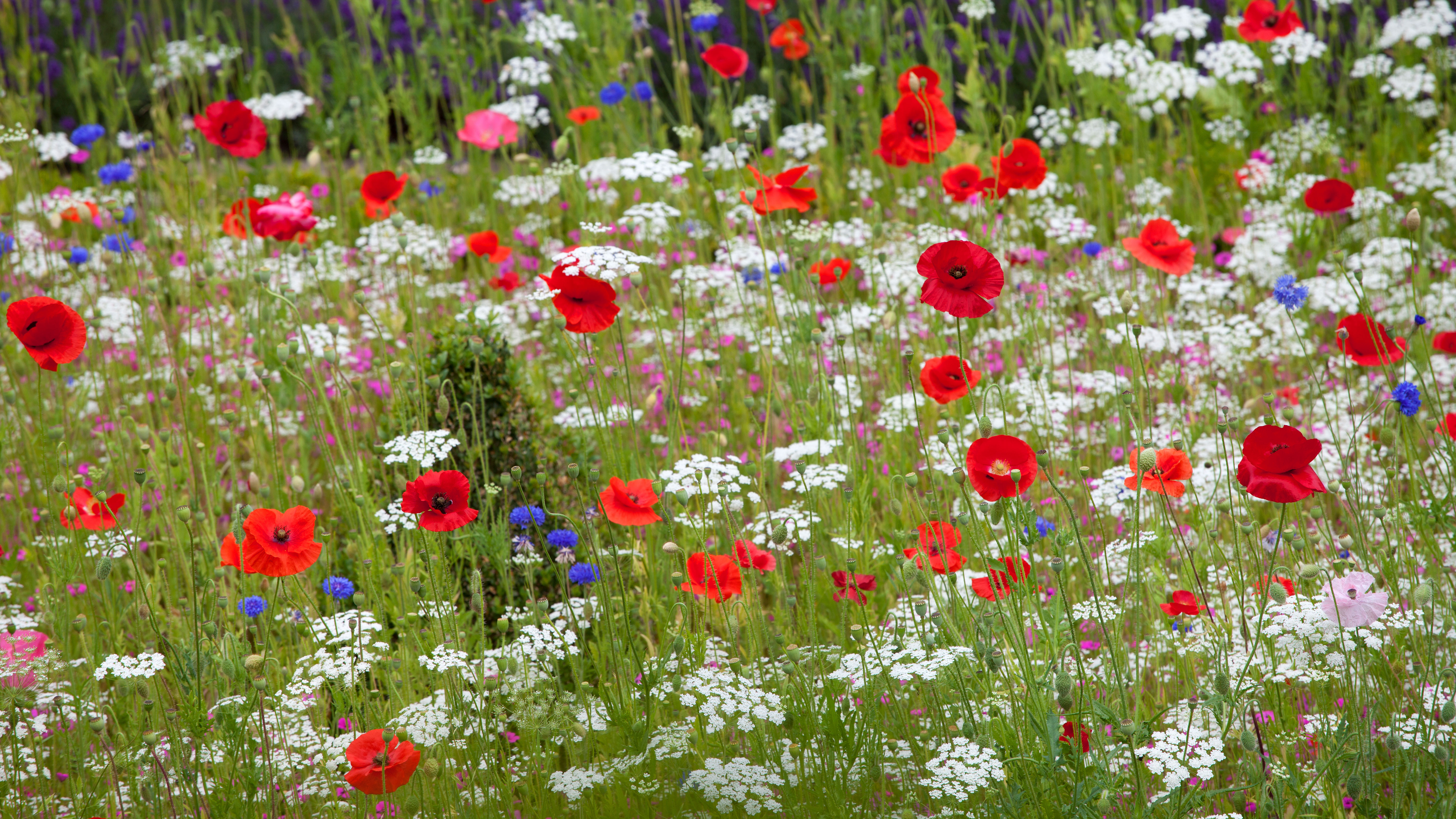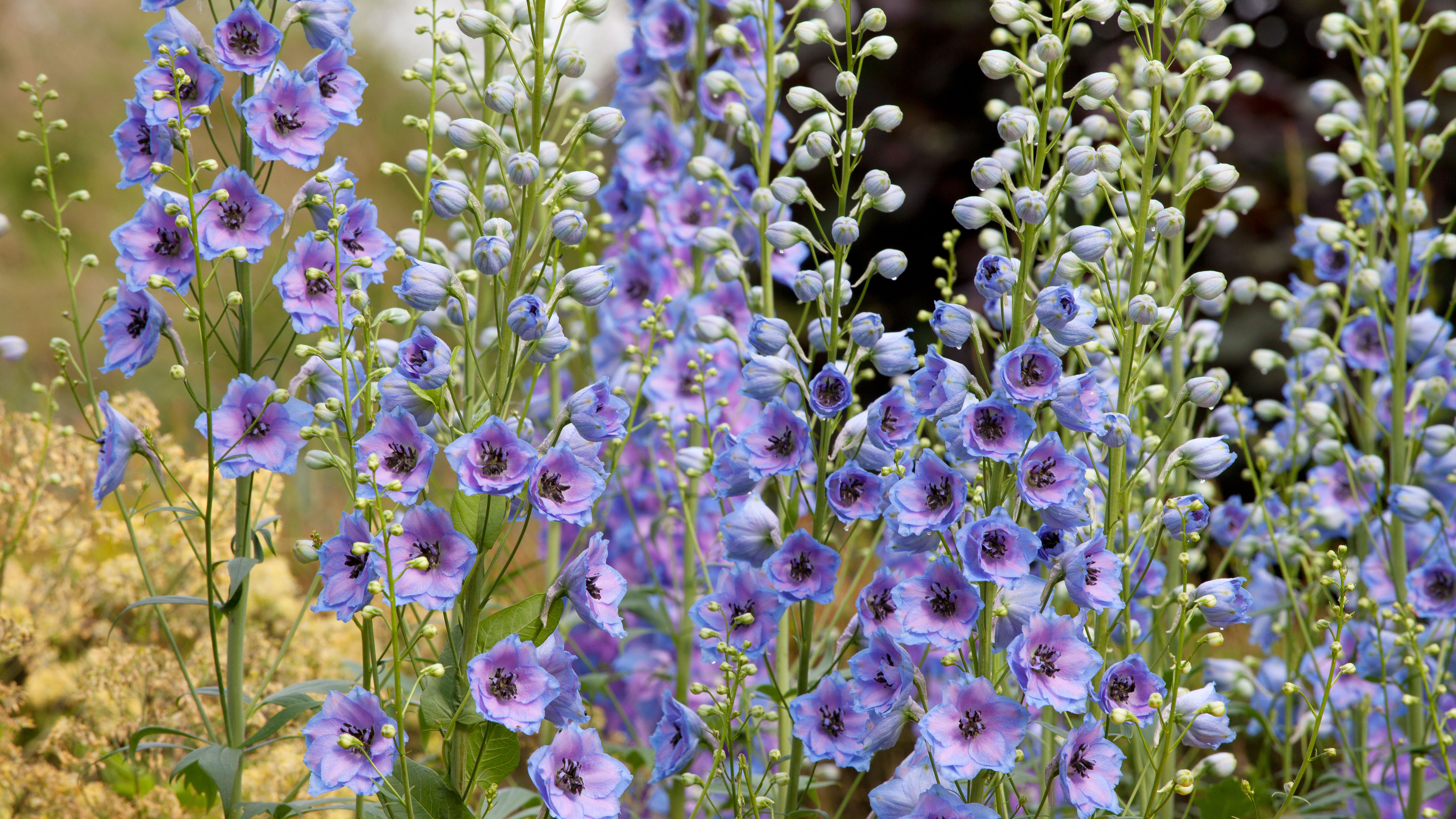The moss garden is the easy, eco-friendly alternative to having grass – and it's almost maintenance-free
Sick of cutting and maintaining grass? The Japanese moss garden is the answer


Inspired by the serene botanical gardens of Japan, the moss garden is set to be the latest trend for solving problems with patchy, yellow grass and overgrown lawns.
So, if your patch of lawn is more weeds than grass, it's time to ditch it in favor of its spongy counterpart: moss.
See: Small garden ideas – clever designs for maximizing a compact space
A quick online search of 'moss' results in hundreds of people asking for ways to remove and kill moss – the seemingly endless battle that evidences moss's durability and tolerance of all kinds of conditions. But actually, it might be something you want to cultivate instead of kill.
So lay down your weed-killers and consider swapping your high-maintenance grass for a mossy-alternative. A moss lawn offers year-round green across your whole yard, rather than in patches, plus is much better for the environment. Here's what you need to know.
What is garden moss?
Garden moss is actually a variety of very simple plants that grow almost anywhere, and on surface outside, particularly if it's damp and shady. You might notice it not only in a back yard, but also on the shaded part of your home's roof, perhaps even windowsills and pathways that lie mainly in shade. In these places you will want to discourage them, but in place of a lawn, moss gardens have real benefits.
Is moss better than grass?
Moss is better than grass. Moss gardens are more eco-friendly, lower maintenance and durable, and while it's not the traditional Western way to garden, it is gaining credence.
Sign up to the Homes & Gardens newsletter
Design expertise in your inbox – from inspiring decorating ideas and beautiful celebrity homes to practical gardening advice and shopping round-ups.
‘Moss gardening is traditional in Japan and has been very popular in North-West and North America.’ says Guy Barter, chief horticulturist at the Royal Horticultural Society.
- See: Best lawn mowers – top lawn mowers, in case you keep the grass
Is moss good for a garden?

Moss is good for a garden – but it also has wider benefits.
‘Moss obtains its nutrients from the atmosphere.’ says Al Benner, president of MossAcres ‘For this reason it does an amazing job of cleansing the air of pollutants’ .
There are an estimated 40 to 50 million acres of lawn across the United States which in its short clipped form offers very little environmental benefit. ‘If only a smaller proportion of this was converted into moss lawns in lieu of grass, the environmental benefits would be huge’.
How do I start a moss garden?
Al Benner from MossAcres advises on how to start a moss lawn.
- Clear the area of weeds, leaves, and debris down to a bare and relatively firm soil surface.
- Next lightly scratch the soil surface.
- If your moss is dried, then soak in a bucket for a few minutes then firmly press the sections of moss into the soil. If your moss is already living and healthy, you do not need to soak it and can just press into the soil.
- Then water the entire area thoroughly.
- Keep it moist for the next 4-6 weeks while it establishes.
Maintaining a moss garden

Everyone’s main complaint about a grass lawn is the maintenance it requires. Moss needs none of that meticulous care.
'Cutting grass burns lots of fossil fuel, makes a filthy noise and is about the most injurious thing you can do to wildlife' says Monty Don, as he highlights the lack of sustainability in gardening in an interview with Radio Times.
See: Monty Don’s tips on getting the perfect lawn – and the mistakes you're making
A moss lawn solves all three problems in one go. Most moss won’t grow much taller than 4 inches, so you can put away the lawn mower for good – plus it’s a great habitat for a whole host of wildlife.
You don’t need to worry about using fertilizers, pesticides or feed to keep your moss garden looking healthy either. Moss is very durable, grows well in sun and shade alike and doesn't need the manicuring of a lawn. So it is both cost-effective and great for the environment.

Caring for a moss garden is really easy.
‘Moss needs no fertiliser, watering may be needed in dry summers and weeding is essential – repeated application of certain contact herbicides will promote moss, but nowadays cultivation regimes that depend on pesticide inputs are no longer acceptable, so hand-weeding it must be,’ says Guy Barter, chief horticulturist at the RHS. ‘Over time, a covering of moss will prevent weed seeds germinating.
‘Come fall, remove any leaves that have dropped onto your lawn as the moss can mold and rot underneath,’ advises Al Benner.
Will moss grow better than grass?

Moss grows much better than grass as it has adapted to grow in poor soil conditions and shady areas of the garden, unlike grass which needs water, sunlight and high-quality soil in order to thrive.
Moss also has shallow roots, so doesn’t need to be planted deep in the ground. It can easily grow in poor, compacted or rocky ground.
Can you walk on a moss garden?

You can walk on a moss garden and it can even benefit from being walked on when first laid to help it establish. The majority of moss can tolerate light foot-traffic but it is worth adding a path or stepping stones in the lawn to help reduce footfall.
One thing to note, a moss garden will feel spongy and a little uneven underfoot, unlike a sharply cut grass lawn.
Do I need to water a moss lawn?
Moss does not need to be watered more than grass, in fact it doesn’t need to be watered very often at all. When first planted, light and frequent watering helps the moss to quickly establish, Al Benner advises to ‘keep it moist for the first four to six weeks’, but after that it does not need watering regularly – unless you live in a very arid area or suffer a particularly dry summer.
That aside, this does make moss not only an eco-friendly lawn option but also keeps down the water bills. Moss is also a great yard alternative if you live in an area that has regular droughts and hosepipe bans. Moss often changes colour when in need of a drink, so if it's looking a little less green, give it a light watering to help rehydrate it.
Are moss lawns expensive?
Moss lawns are expensive compared to sowing grass seed – expect to pay between $4 and $10 per square foot – but the maintenance is almost non-existent, so you will reap the rewards by not spending out on lawn feed and by not spending time watering the grass.

Having graduated with a first class degree in English Literature, Holly started her career as a features writer and sub-editor at Period Living magazine, Homes & Gardens' sister title. Working on Period Living brought with it insight into the complexities of owning and caring for period homes, from interior decorating through to choosing the right windows and the challenges of extending. This has led to a passion for traditional interiors, particularly the country-look. Writing for the Homes & Gardens website as a content editor, alongside regular features for Period Living and Country Homes & Interiors magazines, has enabled her to broaden her writing to incorporate her interests in gardening, wildlife and nature.
-
 7 native perennials to plant in April – for glorious flowering displays to attract bees, butterflies, and hummingbirds
7 native perennials to plant in April – for glorious flowering displays to attract bees, butterflies, and hummingbirdsDiscover some of the best perennials to plant in April to make your garden a hotspot for wildlife
By Drew Swainston Published
-
 Martha Stewart's smart laundry room shelving makes exceptional use of every inch of wall space – it will turn your smallest area into an ultra-functional space
Martha Stewart's smart laundry room shelving makes exceptional use of every inch of wall space – it will turn your smallest area into an ultra-functional space'You can greatly expand the usability of your space by just installing some of these great shelving units': You can follow her technique for under $34
By Megan Slack Published
-
 Water garden ideas – 9 ways to introduce soothing water to your outdoor space
Water garden ideas – 9 ways to introduce soothing water to your outdoor spaceFrom cascading fountains to wildlife ponds, there are plenty of ways to create a tranquil water garden
By Leigh Clapp Published
-
 How to grow poppies
How to grow poppiesFind out how to grow poppies to enjoy the beauty of these brightly colored tissue paper-like blooms
By Leigh Clapp Published
-
 How to grow delphiniums from seed
How to grow delphiniums from seedFind out how to grow delphiniums from seed and enjoy these colorful cottage garden favorites filling beds and borders
By Leigh Clapp Published
-
 How to grow ferns – when and how to plant and care for them
How to grow ferns – when and how to plant and care for themLearn how to grow ferns to enjoy the texture and form of these versatile plants in many areas of your garden
By Leigh Clapp Published
-
 How to grow sweet peas from seed – in borders and pots
How to grow sweet peas from seed – in borders and potsFind out how to grow sweet peas and where to enjoy their wonderful color, ruffled blooms and sweet fragrance in your garden
By Pippa Blenkinsop Published
-
 How to make fat balls for birds – easy steps feed our feathered friends
How to make fat balls for birds – easy steps feed our feathered friendsLearn how to make fat balls for birds to ensure their wellbeing throughout the winter
By Holly Reaney Published
-
 Planning a kitchen garden – from layouts to picking the best crops
Planning a kitchen garden – from layouts to picking the best cropsPlanning a kitchen garden is easy with this expert advice – whether yours is in beds, borders or a dedicated patch – you're guaranteed success
By Leigh Clapp Published
-
 How to grow cosmos – expert tips on when and where to plant these flowers
How to grow cosmos – expert tips on when and where to plant these flowersLearn how to grow cosmos to add bright color in your garden from summer through to fall with their beautiful blooms
By Leigh Clapp Published